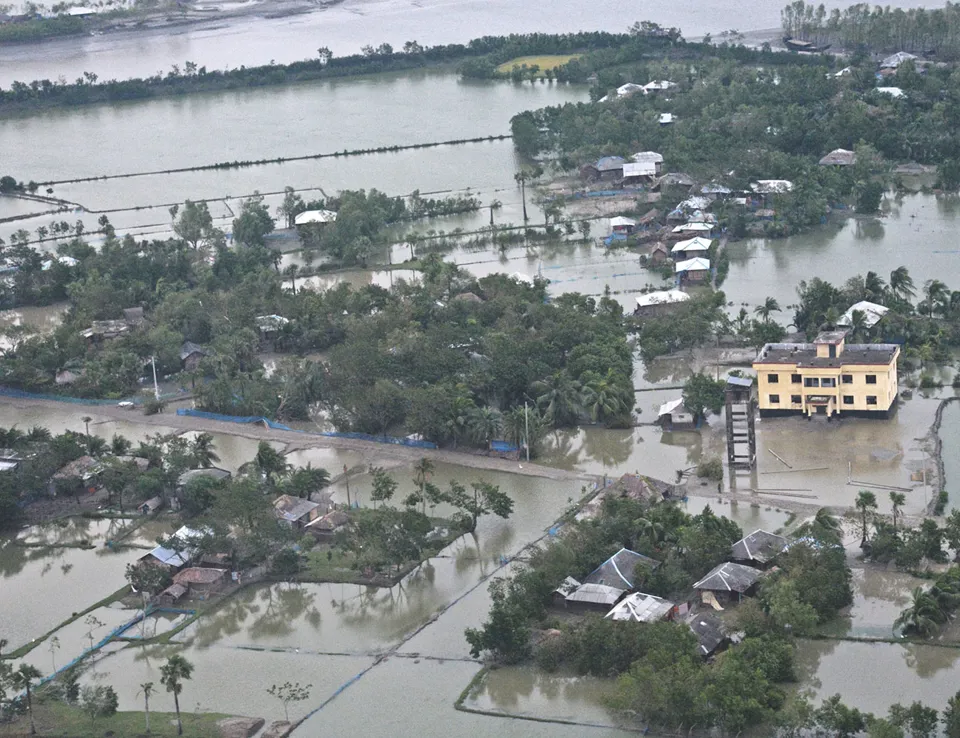Carbon capture, utilisation and storage: A vital tool in reaching net zero
18 Dec 2023
CCUS is increasingly put forward as a route towards meeting global climate targets, but how and where could it be most beneficial?
It is widely recognised that capture, utilisation and storage (CCUS) will play an important role in reducing CO₂ emissions and meeting global net zero targets.
Whilst the adoption of renewable energy and the improvement of processes and efficiencies will remain core elements of the net zero transition, they alone are not sufficient to meet our shared goals.
Indeed, the targets set out in the 2015 Paris Agreement - and the associated Intergovernmental Panel on Climate Change Special Report - make it clear that CCUS will be essential if global temperature rise is to be kept below 1.5°C.
However, it must also be accepted that the wide-scale deployment of CCUS is no silver bullet either. It should be seen, instead, as an important part of a growing toolbox of responses.
Where CCUS can make a difference
CCUS could have a significant role to play, for example, in hard-to-decarbonise industries or in rapidly developing regions of the world.
For example, consider Southeast Asia: this is a highly populous region with a fast-growing economy; a high energy demand that is mostly met by fossil fuels at presetn; and is home to a significant portion of the world’s most emissions-intensive industries, such as cement production, steel manufacturing, and oil and gas processing and refining.
As one of the few technically-ready solutions available for decarbonising heavy industry, CCUS could be deployed alongside recently-built power plants in the region to ensure sustained energy security whilst supporting continued economic growth.
Indeed, although the extent of Southeast Asia's capacity to store carbon is still uncertain, some estimates suggest it could easily exceed its requirements.
But there is work to do first. Exploiting its potential will require financial support, new legal and regulatory frameworks. It will also need a spirit of collaboration between neighbouring countries to enable infrastructure to be shared and nurture local supply chains focused on the specialised aspects of transport and storage.
Negative Emissions Technologies
When talking about CCUS, it is important to mention Negative Emissions Technologies (NETs), also commonly referred to as Greenhouse Gas Removals (GGRs).
Ultimately, NETs result in the net removal of greenhouse gas emissions and can be split into two different categories:
- Nature-based solutions including reforestation, and engineered technological solutions, such as Bioenergy Carbon Capture and Storage (BECCS)
- Direct Air Carbon Capture and Storage (DACCS).
When deployed alongside certain processes, CCS technologies can fall into the NETs category, however, not all uses of CCS contribute to negative emissions, and thus in those cases cannot be classified as such.
Increasingly viable technologies
Interest in CCUS around the world is gaining momentum, underpinned by several interconnected factors.
Firstly, the tightening of climate targets – and the profile carried by events such as the annual COP talks - has helped secure long-term support among policy makers.
Second, the emergence of more efficient and cheaper technologies that encourage investors to take on these highly complex programmes, despite the daunting upfront costs and extensive engagement with multiple stakeholders.
Our teams have a deep understanding of the challenges impacting industrial scale CCUS deployment regulatory frameworks, carbon markets, business models, economics and cost reduction, monitoring, reporting and validation, permanent utilisation and storage.
Our experience covers multiple facets of CCUS and NETs, having delivered specialist expertise to both the public and private sector over the years.
Our team can help you with your challenges as we offer:
- Techno-economic assessments; advising on appropriate technologies and routes for the development of carbon capture
- Modelling of decarbonisation scenarios (and predicting the role of CCS in decarbonisation)
- Due diligence
- Feasibility studies for carbon capture, utilisation and storage at industrial sites
- Strategic country and/ or regional level reviews, guidance on the whole CCUS value chain and roadmaps to the establishment of CCUS capture, transportation and storage hubs
- CO2 feedstock analysis for sustainable fuel opportunities.
For more information about our work, visit our services page.




 Follow Ricardo plc for regular updates
Follow Ricardo plc for regular updates




